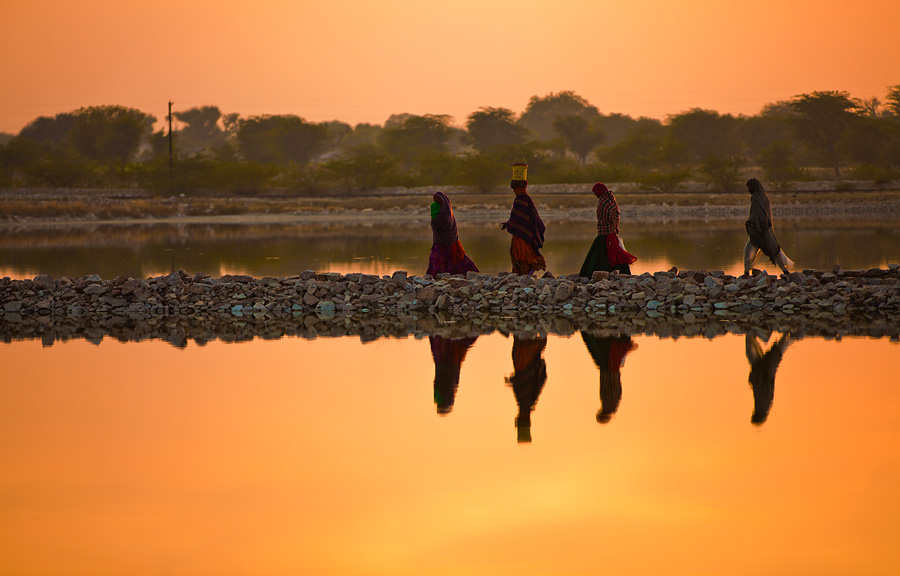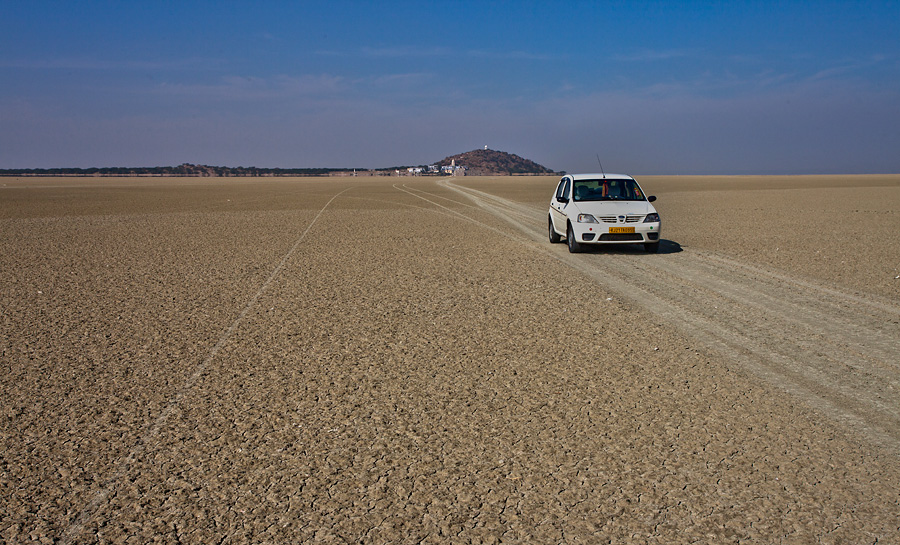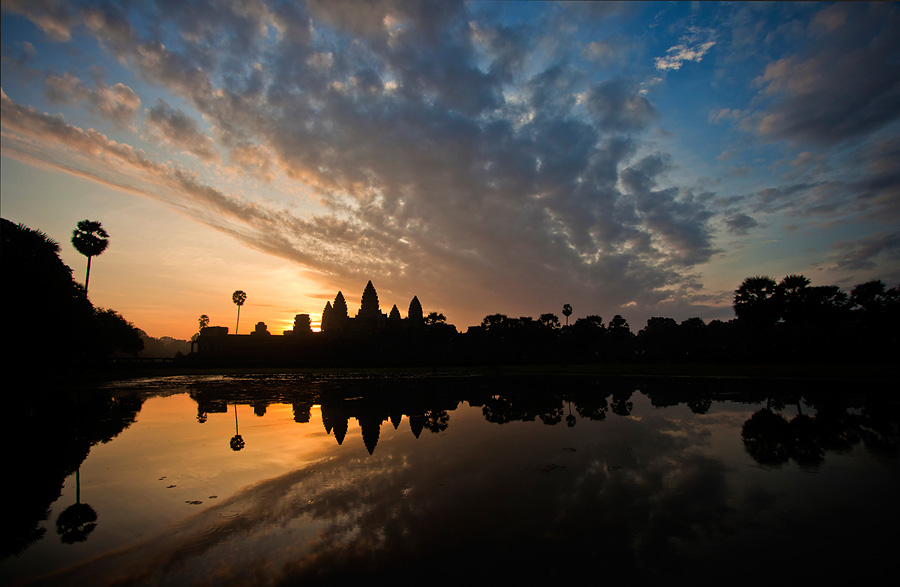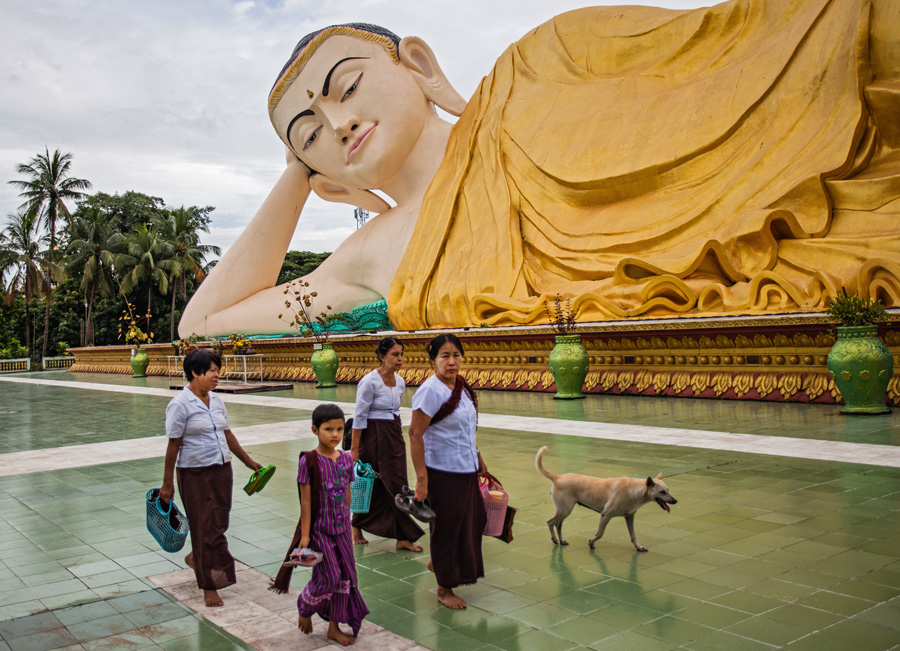
There was not a single blade of grass could be seen in the endless, perfectly plain landscape that expanded towards the horizon in front of Shakambari Temple. The earth was flat as though a road roller ran amok for ages until the smallest aberrations were pressed in and done away with. The monotony of a dry, drought-struck earth was broken by a few deeply entrenched tyre-marks forming a line that extended to infinity. Our driver descended gently into the flat, testing the firmness of the ground with a bit of uncertainty, wondering if the car would sink into the ground.

The dry lake-bed of Sambhar Lake. Seen far behind at the base of the hill is Shakambari Devi Temple.
It took less than a minute for him to realize that we were on a ground as firm and clear as a runway. He gently pressed on the pedal, not slowing down until the speedo hit three figures. In the back seat, it was such a smooth ride that we did not realize the speed until we were mentioned about it. We slowed down, stopped in the middle of the flats where we could start seeing a few trees and buildings on the other end. We were now in the center of Sambhar Lake, a large salt water lake that was mostly dry in the winter season.
It was nearly a thousand years ago when Khmer Kings commissioned the construction of gigantic temples on the edge of Tonle Sap Lake. They probably never had envisioned a future where people from across the world would come to visit their creations even centuries after their kingdom ceased to exist.
Siem Reap, the gateway city to the temples of Angkor receives more than two million visitors every year. This means, unless you go in the sweltering heat of summer months, you will never be able to find a lonely spot devoid of crowds anywhere in the large temples spread across the landscape. This has become such an important consideration for some travellers, a few travel agencies claim to keep informers in every temple and help their clients find less crowded spots!

With the crowds growing every year, Siem Reap’s attractions are no longer limited to the ancient temples. Travellers suffering from temple-fatigue can pick from a wide choice of activities and entertainment geared towards the tourists – such as a circus, joy-rides on all-terrain vehicles, visits to crafts villages and much more. And when the darkness falls, there is always the pub-street where an amazing choice of restaurants serve up food and drinks from across the world.
It has been a busy and silent month on the blog, thanks to an extensive travel calendar in South East Asia and the time that went in preparing for the journeys. In the first ten days of this month, I was in Cambodia, leading a photography tour across the country. Subsequently, I arrived in Myanmar and spent a few days strolling the streets of Yangon and visiting a few beautiful places nearby. Today is rest-day, and gives me some time to write this post.

Next week, I will be leading a photography tour through Myanmar before returning home. Another month later, I am out again on photography tours in Varanasi, North-East India and Rajasthan, ending my usual long streak of photo-journeys in winter.
Here is an image I made in Bago, Myanmar, two days ago – Mya Tha Lyaung sleeping Buddha.



